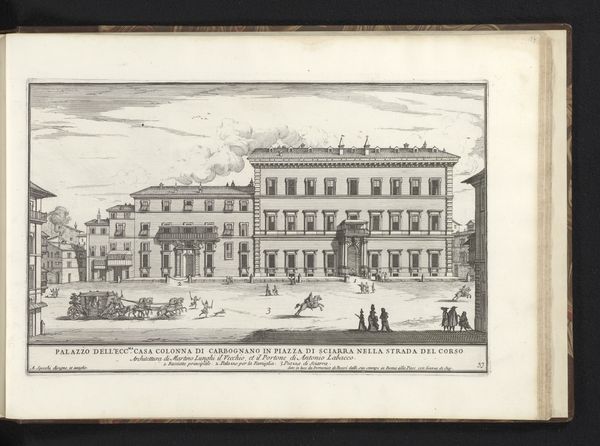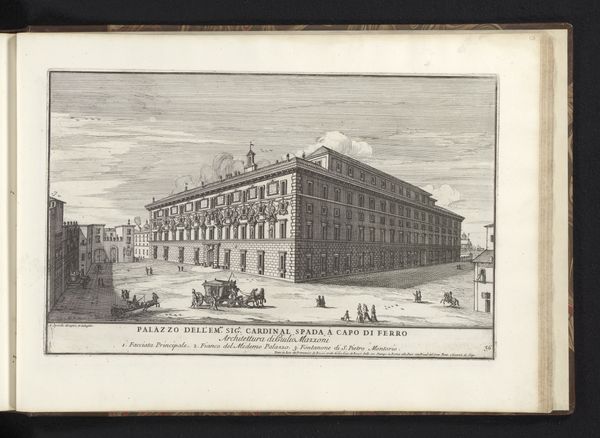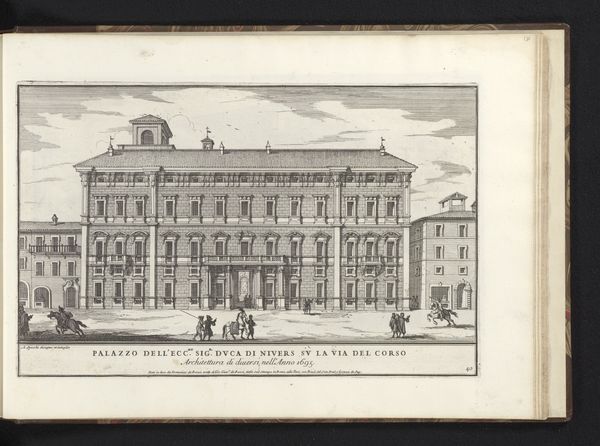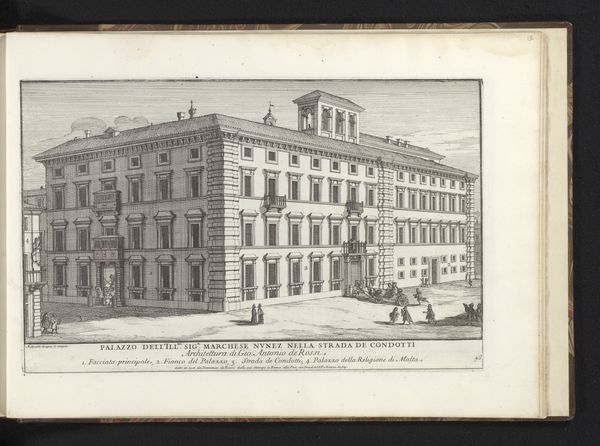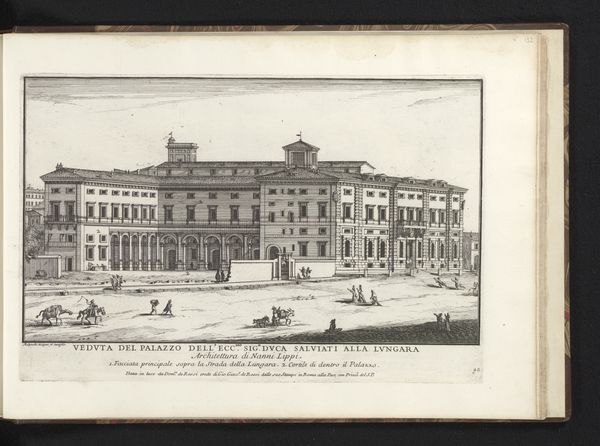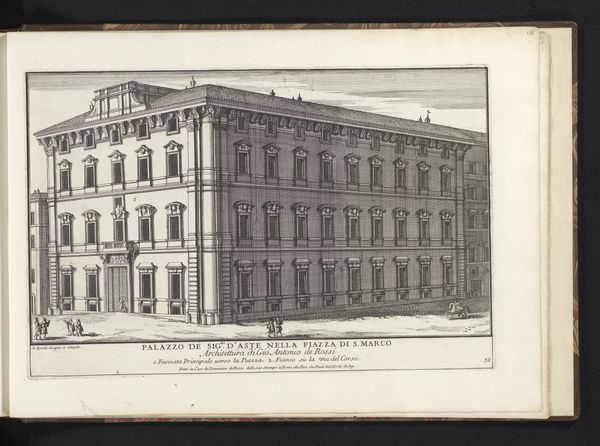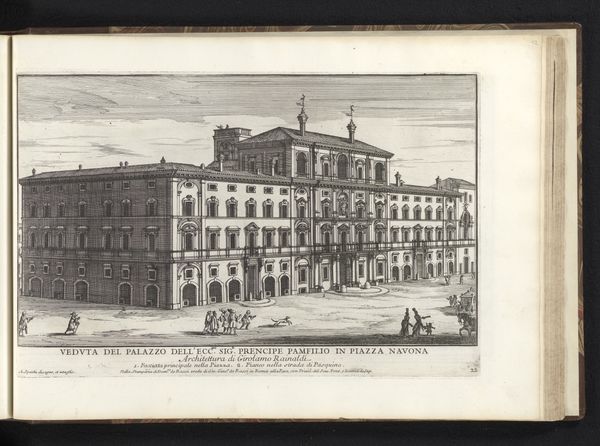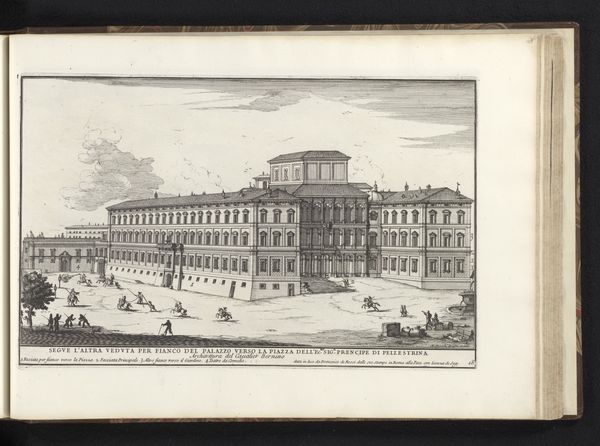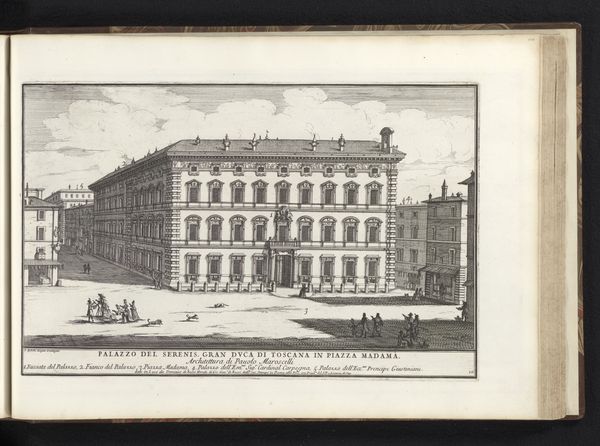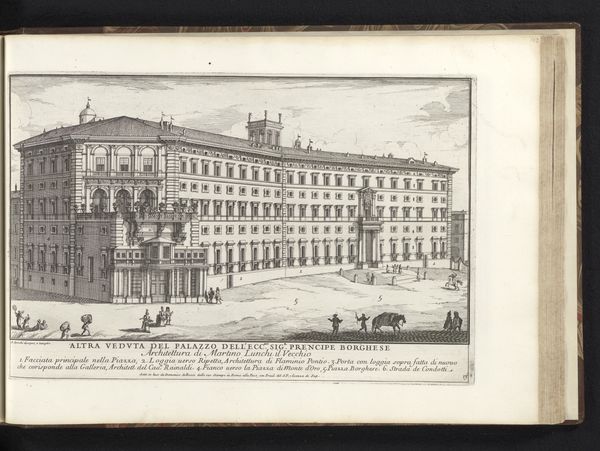
engraving, architecture
#
baroque
#
line
#
cityscape
#
engraving
#
architecture
Dimensions: height 217 mm, width 335 mm
Copyright: Rijks Museum: Open Domain
Curator: This engraving by Alessandro Specchi, dating back to 1699, depicts the Palazzo Chigi-Odescalchi in Rome. What are your first impressions? Editor: Stark. The crisp lines of the engraving, combined with the severe geometry of the Palazzo, create a feeling of imposing order. It's all right angles and precise repetition. Curator: Specchi, an important figure in Roman printmaking, aimed to capture the architectural achievements and urban transformations of his time. The print itself, etched on a metal plate, acted as both a record and a tool for disseminating knowledge about design. The material object embodies both artistry and labor. Editor: The meticulousness is definitely apparent. Look at the way the light falls across the facade, the way the depth is suggested through the receding lines. It is architectural drafting translated into an artistic medium, celebrating line and form. Curator: Indeed. And while the Palazzo seems permanent and grand, consider the lives of the workers involved in its construction and maintenance—the often-unseen labor behind the power this building represents. This was commissioned by powerful patrons, the Chigi family, reflecting their ambition and wealth. It literally embodies a power structure. Editor: But we shouldn't let that overwhelm the pure visual pleasure of the piece. Note the subtle variations in line weight, how the artist suggests atmospheric perspective by lightening the lines representing the buildings in the background. Semiotics is so important when unpacking artwork details, to bring out deeper understandings. Curator: Fair point. But understanding how the Palazzo was built, who benefitted, and the material means that made it possible brings a crucial layer to appreciating its meaning. Consider how prints like this were disseminated—consumed—by different audiences to communicate power. Editor: Ultimately, though, I'm struck by the sheer artistry embedded in the technical skill. Curator: Yes, Alessandro Specchi’s work encapsulates so much about the power structures in seventeenth-century Rome. Thanks for discussing.
Comments
No comments
Be the first to comment and join the conversation on the ultimate creative platform.
